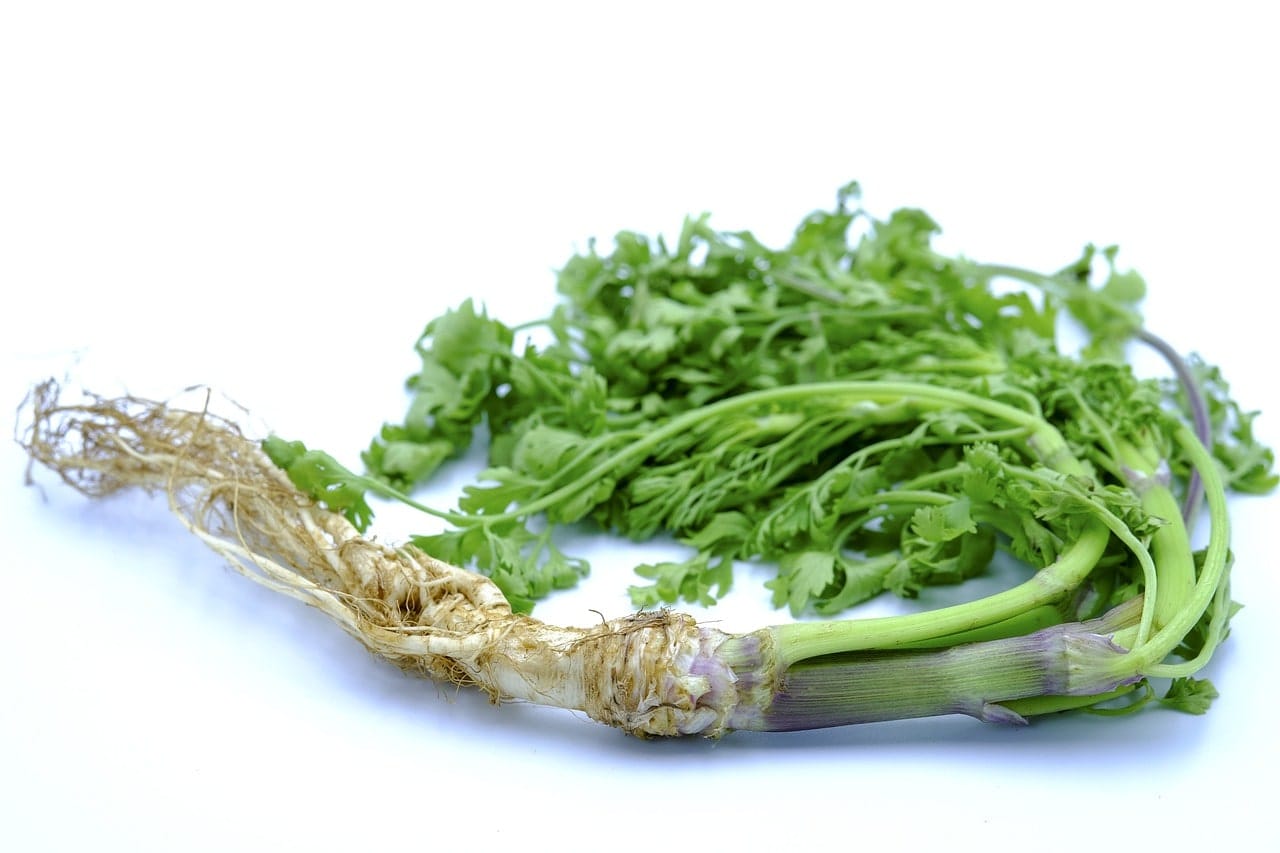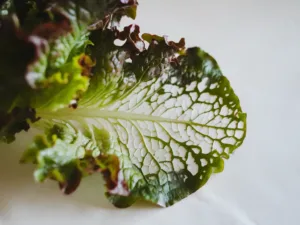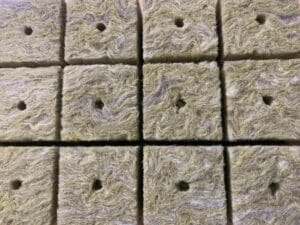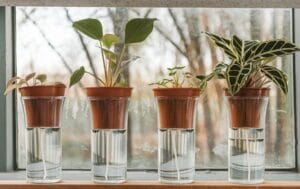Coriander is a versatile and aromatic plant used in many cuisines around the world. Whether as fresh leaves, seeds, or to enhance dishes, coriander is a true all-rounder. But what makes growing coriander hydroponically so special? Hydroponics, the cultivation of plants without soil, offers numerous advantages over traditional growing methods. You can grow your coriander under controlled conditions, leading to faster growth, higher yields, and healthier plants.
Hydroponic cultivation of coriander also allows you to harvest fresh herbs all year round. Traditional growing methods can often be affected by weather conditions, pests, and soil quality. With hydroponics, you can bypass these challenges and get the most out of your coriander—always fresh, always at hand!
The Best Coriander Varieties for Hydroponics
Not every coriander variety is equally suitable for hydroponic cultivation. Choosing the right variety can make a big difference, especially in terms of growth, leaf size, and aroma. Here are some of the best varieties for hydroponics:
- ‘Santo’: This variety is particularly robust and grows quickly. It produces large leaves and has an intense aroma, ideal for fresh dishes. ‘Santo’ is known for its resistance to bolting, meaning the plant stays in the vegetative state longer and produces more leaves.
- ‘Calypso’: One of the best varieties for continuous harvests. ‘Calypso’ is resistant to bolting and offers high leaf production. It is perfect for those who want to harvest regularly and ensure a constant supply of fresh coriander.
- ‘Leisure’: This variety is ideal for commercial cultivation in hydroponic systems. It grows quickly and offers high yields. ‘Leisure’ has a strong flavor and is a popular choice for use in Asian cuisine.
When selecting a variety for your hydroponic setup, always consider characteristics such as growth speed, leaf size, and bolting resistance to achieve the best results.
Which Hydroponic System is Best for Coriander?
Choosing the right hydroponic system is crucial for the successful cultivation of coriander. Different systems offer various advantages, depending on space, budget, and personal preferences. Here are some of the best systems for growing coriander:
- Nutrient Film Technique (NFT): This system is ideal for coriander as it allows for a continuous supply of nutrients and water. The plant roots hang in a shallow, sloping channel through which a thin layer (film) of nutrient solution flows. This ensures excellent oxygenation and promotes rapid growth.
- Deep Water Culture (DWC): In this system, the plant roots are suspended in a nutrient solution. With constant oxygen supply via air stones and pumps, plants can grow particularly fast in this system. DWC is relatively easy to set up and requires little maintenance, making it a good choice for beginners.
- Ebb and Flow System: This system is well-suited for coriander as it allows plants to be regularly supplied with nutrients while excess water drains away. This prevents overwatering and allows the roots to breathe.
Each of these systems has its own advantages and can be effectively used for growing coriander depending on your needs and available space.
From Seed to Seedling
Growing coriander in hydroponics begins with selecting high-quality seeds. Choose seeds specifically meant for herb cultivation, as they often have a higher germination rate and better quality. Start sowing in a germination box or special growing cubes, such as rock wool or coco coir, kept in a moist environment. Coriander often has a slightly longer germination period, so patience is required. It can take up to 10 days for seeds to begin sprouting.
During germination, it’s essential to keep the seeds evenly moist but avoid waterlogging. A cover can help retain moisture. Once the seedlings are about 2-3 cm tall and show their first true leaves, they can be transferred to the hydroponic system. Be careful not to damage the delicate roots. Initially, young plants require fewer nutrients. A weak nutrient solution helps them establish and grow healthily.
Another tip: Ensure that seedlings receive sufficient light during the growing phase, but avoid exposing them to intense light that could burn the young leaves. A light intensity of about 6,000 to 8,000 lux is ideal for the early phase.
| Germination Conditions for Coriander | Value/Recommendation |
|---|---|
| Germination Temperature | 18-24 °C |
| Germination Period | 7-14 days |
| Moisture | Evenly moist, but not wet |
| Light Requirement | Moderate, approx. 6,000-8,000 lux |
What Substrate is Ideal for Coriander?
The substrate is crucial for anchoring the roots and supplying the plant with nutrients and oxygen. For coriander, there are several substrates that are particularly suitable. Rock wool is one of the most popular options. It offers good air circulation while retaining sufficient moisture. Rock wool is easy to handle and supports root growth very well, making it an excellent choice for hydroponic systems.
Another option is coco coir. This substrate is environmentally friendly, sustainable, and offers excellent water retention. Coco coir is ideal for growing coriander as it aerates the roots well while retaining moisture. It also has the added benefit of not over-saturating the roots, which can prevent rot.
Perlite is also an option, especially when mixed with other materials to improve drainage. However, perlite alone might offer too little water retention for coriander. Therefore, a mix with coco coir or vermiculite is often better suited. Ultimately, the choice of substrate depends on your personal preferences, availability, and the chosen hydroponic system.
The Right Temperature for Optimal Growth
Coriander loves moderate temperatures and thrives best in a range of 18-24 °C. Temperatures above 27 °C can cause the plant to bolt and flower faster, which can affect leaf quality. In a hydroponic setup, it’s easier to maintain this ideal temperature, especially if you are growing indoors.
If you are growing coriander in an environment with fluctuating temperatures, a small fan can help keep the temperature even and improve air circulation. This not only prevents heat stress but also reduces the risk of fungal diseases that can easily occur in stagnant, humid air.
For nighttime temperatures, it’s important that they don’t drop too low, ideally not below 15 °C. Too low temperatures can slow growth and make the plant more susceptible to diseases.
Coriander Needs the Right Light
Light is a crucial factor for coriander growth in hydroponics. Coriander is a sun-loving plant that needs about 12-14 hours of light per day to thrive optimally. In an indoor setup, it’s best to use LED grow lights as they offer a broad light spectrum and are energy-efficient. Make sure to choose lamps with a full spectrum, as coriander requires both blue and red light to grow well.
The light intensity should be between 10,000 and 15,000 lux. However, too strong light can burn the leaves or stress the plant, especially in the early growth phase. Maintain a distance of about 30-40 cm between the plants and the lights to ensure even light distribution. During the germination phase and the first weeks of growth, you can set the lights to a lower intensity to avoid overwhelming the young plants.
Additionally, it’s important to regularly adjust the lamps as the plants grow to ensure they always receive the optimal amount of light. A light timer can help keep the light cycles consistent, which is especially important for the growth and health of coriander.
pH and EC Levels: What to Consider?
For healthy growth of coriander in hydroponics, the pH and electrical conductivity (EC) levels of the nutrient solution are crucial. The optimal pH range for coriander is between 6.0 and 6.5. A pH level that is too acidic or too basic can impair the uptake of nutrients by the roots and lead to growth problems.
To maintain the pH within this range, the nutrient solution should be tested regularly and adjusted if necessary with pH-up or pH-down solutions. These products are available in hydroponic specialty stores and allow for easy adjustments. An electronic pH meter can be very helpful here to ensure accurate measurements.
The EC level, which indicates the concentration of nutrients in the solution, should be between 1.2 and 1.8 mS/cm for coriander. A high EC level can lead to over-fertilization, while a low level indicates insufficient nutrients. An EC meter helps to regularly check and adjust the level to promote optimal growth.
The Right Fertilization for Robust Coriander
Coriander requires a balanced nutrient supply to grow robust and aromatic. The primary nutrients such as nitrogen (N), phosphorus (P), and potassium (K) play a crucial role in cultivation. Coriander has a relatively high nitrogen demand as it promotes leaf growth and keeps the plant strong and healthy. Phosphorus is important for root development, while potassium improves overall plant health and resilience.
In addition to the main nutrients, micronutrients like calcium, magnesium, and iron are essential for coriander cultivation. A deficiency in these trace elements can lead to discoloration, growth delays, and other health problems. There are specially developed nutrient solutions for herbs that are tailored to the needs of plants like coriander and ensure a balanced supply.
To ensure the correct amount of nutrients, you should change the nutrient solution weekly and follow the manufacturer’s recommendations for dosing. Start with a lower concentration, especially in the seedling phase, and gradually increase the dosage as the plants grow. Regularly check the EC level to ensure that the nutrient concentration remains in the optimal range and adjust as needed.
Harvest Time! When and How to Harvest Coriander Properly?
The harvest of coriander in hydroponics can begin as early as 4 to 6 weeks after sowing, depending on the chosen variety and growing conditions. The best time to harvest is when the plants have reached a height of about 15-20 cm and the leaves are fully developed and aromatic. A key advantage of hydroponics is that you can continuously harvest coriander without having to remove the entire plant. This ensures a constant supply of fresh leaves.
To harvest coriander properly, always pick the outer, older leaves and leave the inner, younger shoots intact. This promotes continuous growth and allows for repeated harvests. Use a sharp pair of scissors or a knife to carefully cut the stems without damaging the roots or main stem. Regular harvesting keeps the plant in the vegetative state and continues to produce new leaves.
A good tip is to harvest in the early morning when the leaves are freshest and the essential oils are most concentrated. This way, you get the best flavor and highest quality. Store the harvested coriander in a damp cloth in the refrigerator to maintain freshness.
Diseases and Pests: What Can Happen and How to Prevent It?
Even in a controlled hydroponic system, diseases and pests can occur. The most common problems with coriander include powdery mildew, aphids, and root rot. Powdery mildew often occurs with high humidity and poor air circulation. To avoid this, make sure your growing area is well-ventilated and the plants have enough space. Remove affected leaves immediately to prevent spreading.
Aphids can multiply quickly and weaken coriander plants by sucking the sap. Natural predators like ladybugs can help control the population. Alternatively, you can use a homemade soap solution of water and mild soap to gently spray the leaves and remove the pests. Repeat this regularly until the aphids are gone.
Root rot is another common problem caused by excessive moisture and lack of oxygen supply to the roots. To prevent this, ensure your hydroponic system is well-ventilated and the roots receive enough oxygen. Regularly changing the nutrient solution and using hydrogen peroxide in small amounts can also help keep fungi and bacteria in check.
Special Tips and Advice for Growing Coriander
When growing coriander, there are some special tricks that can help you achieve the best aroma and healthiest plants. One of the most important tips is to keep the plants cool and moist, but avoid direct heat and excessive sunlight, as this can accelerate bolting. When coriander “bolts,” it quickly develops flowers, and the leaves lose their aroma and quality.
Another tip is to store coriander immediately after harvest in a glass of water, similar to flowers, and then keep it in the refrigerator. This keeps the leaves fresh and extends their shelf life by several days. You can also use a spray bottle to occasionally mist the leaves with water, which additionally hydrates and keeps them fresh.
If you want to achieve a particularly aromatic harvest, you can slightly adjust the nutrient ratio to lower the nitrogen content and slightly increase the potassium content once the plants have reached the desired size. This promotes the concentration of essential oils in the leaves and enhances the aroma—perfect for preparing intense dishes!
The Perfect Coriander from Your Own Hydroponic System
Growing coriander in a hydroponic system is a rewarding experience that can provide you with fresh, aromatic leaves all year round. By controlling light, temperature, nutrients, and water, you can create an optimal environment that maximizes the growth and health of your plants. With the right variety choice, suitable hydroponic system, and thoughtful care, you can continuously harvest fresh coriander without worrying about soil quality or weather influences.
With a little patience and some targeted adjustments, such as the right pH and EC levels and balanced fertilization, your coriander will thrive beautifully. And if you follow the special tips, you can even further improve the aroma and shelf life of your harvest. Whether you use coriander for fresh salads, curries, or as a garnish, you’ll appreciate the difference in taste and quality that home-grown coriander from your hydroponic system offers.
So, what are you waiting for? Start your own hydroponic coriander adventure and enjoy the unparalleled taste of freshly harvested herbs straight from your garden anytime!







